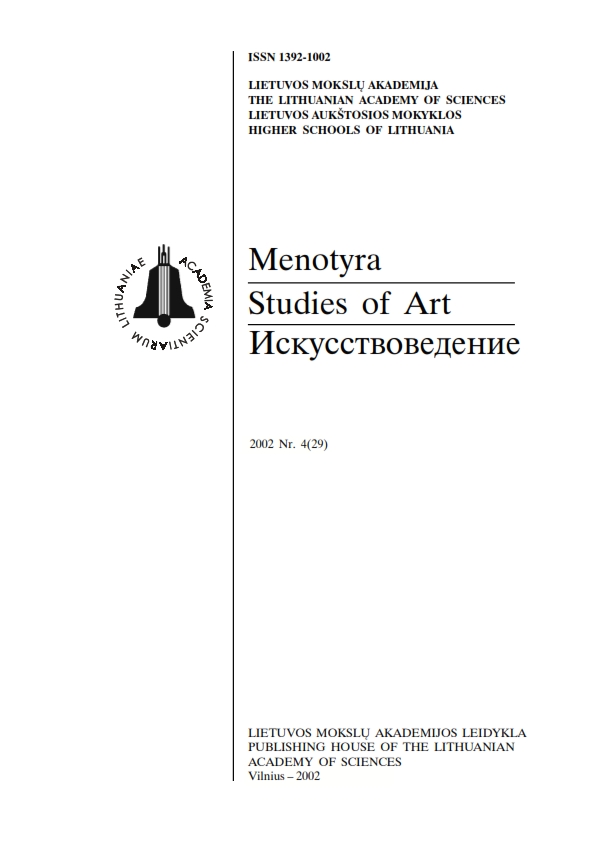Funkcinė Antonino Artaud Žiaurumo teatro elementų analizė
The functional analysis of Antonine Artaud's theatre of cruelty
Author(s): Rasa VasinauskaitėSubject(s): Theatre, Dance, Performing Arts, Aesthetics
Published by: Lietuvos mokslų akademijos leidykla
Summary/Abstract: Drawing on the theoretical insights of Antonine Artaud - performances, aesthetic and philosophical theories of the 19th and 20th centuries that influenced his views and above all his work The Theatre and Its Double (1938) - the article analyses the metaphysical Artaud's conception of the theatre and the essential elements of his "theatre of cruelty": the scenic structure and form, the actor-and-acting system, the means of expression and their cathartic effect on the spectator, the language of the stage and the scenic discourse. The author maintains that Artaud's theatrical vision has been created following the definitions of time and space characteristic of ritual and that it is based on the ritual model as the underlying ground of stage action. The ritual does not require spectators, therefore Artaud denies the traditional relationship among the spectacle, the stage and the spectator, thus making the audience treat the actions being portrayed on the stage as real. By placing the theatre and the ritual on the same footing, Artaud broke the functional and semantic relations in the theatrical structure and brought the theatre close to the ritualistic or pre-theatrical form, but at the same time his ideas had a marked effect on the emergence of avant-garde theatrical forms in the 1960s and '70s.
Journal: Menotyra
- Issue Year: 2002
- Issue No: 4(29)
- Page Range: 24-32
- Page Count: 9
- Language: Lithuanian

